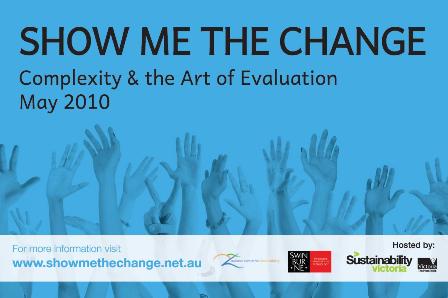Shawn Callahan over at Anecdote has read the first chapter of Chip & Dan Heath’s new book called Switch – How to Change Things when Change is Hard. By the way, Chip & Dan have another great read called Made to Stick.
Here’s some of what Shawn had to say about it …
“It’s (Switch) all about how to motivate people to change. The first chapter has left an indelible impression because of the strong image they conjured to explain what we need to consider to influence change: the Mahout (they call it The Rider), the Elephant and the Path.

Changing behaviour involves a struggle between our rational and well-reasoned thinking and our emotional urges. The mahout represents the rational and reasoned. If the mahout clearly understands where he needs to go he’ll direct his charge that way.
The elephant represents emotional urges. While the elephant might be happy to go the way the mahout directs, if she decides to go another direction there is not a single thing the mahout can do about it.
The path represents anything that might impede or assist the mahout and the elephant to get to where they are going. You want the path to be as easy to follow as possible.”
What’s this got to do with Show Me The Change?
Shawn then goes onto look at what the ‘Elephant’ means in organisational settings and this is where he hits the nail of the ‘SMTC-head’. Over at the “Our Approach” page on the conference website, one of the key principles we have applied to the design of this conference is this one … Exploring the tangible AND intangible.
When exploring (or evaluating) the emotional component of change (the elephant), we are dealing with the intangible. Shawn talks about the use of ‘story’ in organisations and writes …
“Engaging the elephant, the emotion, will take action and stories about things that happened. You might start by telling some stories of customer service blunders to grab their attention. Here’s one that happened to me recently. It’s important you find stories from the organisation. Real life examples. Negative stories, however, often in themselves wont change behaviour, partly because people don’t know exactly what they need to do to get it right. So you also need to find stories of great customer service from your company. We call them Gibson stories because William Gibson (the sci-fi writer) once said: “the future is already here; it’s just unevenly distributed.” You just need to find these stories that represent your company’s future. Tell them. Get people to discuss them. Inspire that elephant.”
In the lead up to and at ‘Show Me The Change’ in May this year, there will be spaces for you to explore the ‘intangibles’ and share your real life examples of evaluating behaviour change. That process can start right now by visiting our Showcase Your Evaluation page and provide a snapshot of a project that you have been involved in. In fact, I’ll share some stuff about Castlemaine 500 right now!
Cheers
Geoff
ps. Many useful story-based evaluation tools also exist and will be shared at SMTC. I am most familiar with the Most Significant Change (MSC) Technique which seeks to uncover the ‘unexpected’ impacts of a project or program. How else is story being used in this space?

